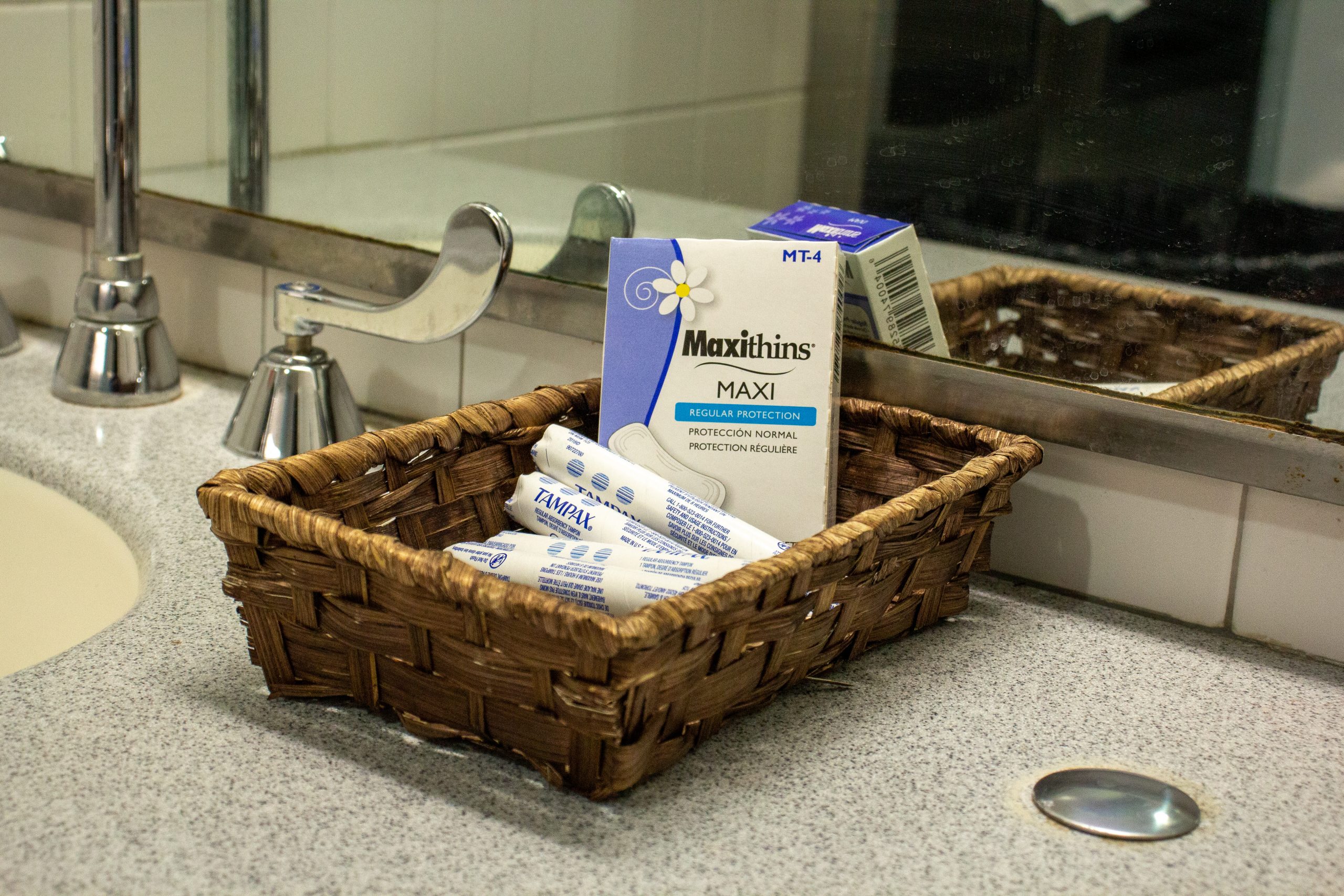Through the collaborative efforts of the Student Welfare Committee (SWC), the Student Alliance Against Sexual Harassment and Assault (SAASHA), the Lawrence University Community Council (LUCC) Sustainability Committee, and the Lawrence University Environmental Organization, various changes have been made to the 2021-established Sustainable Menstruation Program.
The Sustainable Menstruation Program was started by a collaboration between SAASHA and the LU Environmental Organization. The toll of single-use menstruation products, which are typically made up of 90% plastic, on the environment kickstarted it into action, according to Senior Emma Zelles, president of the LU Environmental Organization.
“I think the main takeaway message is that thousands of pounds of plastic [go] into the landfill because of these [single use] products every day,” Zelles said. “This program is giving Lawrence students the resources to be able to fight it on their own.”
Recently, Lawrence University entered a partnership with other educational institutions in the Post-Landfill Action Network (PLAN). According to junior Anders Hanhan, co-chair of the LUCC Sustainability Committee, student leaders of PLAN schools are committed to learning about zero-waste culture. They use the education they receive to develop programs that both promote environmental sustainability and enhance the student experience. As a result, the constantly adapting Sustainable Menstruation Program, which strives for increased welfare in the environment and the welfare of students, is being addressed.
This term, the Sustainable Menstruation Program is rapidly expanding due to the combined financial support of three LUCC committees: SWC, LUCC Sustainability Committee and SAASHA. In previous years, due to high demand, the program has been unable to provide for every student in need of products. However, the increased budget will lead to vastly more students being able to access period products, according to junior MJ Corum, co-chair of SAASHA.
Despite the fact that a larger budget will help, Zelles and Hanhan believe that a higher budget is not a complete solution to the multitude of challenges that the program faces. Issues of accessibility go beyond the absence of the products themselves. Zelles and Corum gave examples including period poverty (the inability for a menstruating person to access the products they need due to financial constraints), stigma and a lack of education surrounding menstruation and diversity in body sizes are what Zelles and Corum attribute the more deeply rooted inaccessibility issues for menstruating college students to.
According to Hanhan, solutions to the problems are being addressed already. Towards the beginning of the year, students were sent surveys about what kinds of products they knew the best, what they used or were interested in using, the best way to deliver products to them, among other related questions. Hanhan said that the high completion rate led the relevant committees to respond to the results according to the needs expressed.
“This is going to be a constant learning process, and as there are opportunities to expand this or to make it more accessible…I think this is an opportunity to work through [it].” Hanhan said.
To address the issue of period poverty among students, any product available in the Sustainable Menstruation program can be ordered through an online form and delivered to a student’s SPC box free of charge due to the combined support of the relevant committees. In addition, the offered products–including pads, menstrual cups and newly added period underwear–are all reusable, and meant to last a minimum of five years, according to Zelles. She imagines this will have a lasting impact on both the environment and the student; these free, reusable products will not only keep single-use products out of landfills, but also alleviate some financial burden on the student even after they leave Lawrence.
“The costs of these products are often prohibitive for college students’ incomes,” Corum said. “This will enable a lot of people to get it who weren’t otherwise able to get these things.”
The task of education and destigmatization falls mostly to SAASHA. The organization hopes as orders begin coming in, they can teach menstruating students how to obtain, use and clean their products.
Zelles explained how the Sustainable Menstruation Program will cater to body diversity. She acknowledged the challenge that of ordering for every unique need, since some Lawrentians may need special products, including plus-size pads, athlete-friendly products, and low-cervix menstrual cups.
“As we’ve done this for more and more years…we’re learning that the more things we add and the bigger we get, the more we want to keep it accessible to everyone of all bodies,” Zelles said. “People have different needs, and so we’re trying to fulfill as many of those needs as we can in a way that keeps people as comfortable as they can be.”
To figure out what is needed, Zelles said the initial product ordering will be separated into two rounds. The first order has already been placed, with “general products,” as Corum calls them. By the end of the term, a second, specialized order based on what is still in demand will be placed to serve more diverse needs. Hanhan said that the end goal of the program is not only to offer sustainable products, but that anyone, regardless of body shape and size, has access to them.
Although the Sustainable Menstruation Program will be available to students, it will not replace SWC’s Aunt Flow, the single-use period products already around campus, Hanhan said. While Sustainable Menstruation must be ordered and delivered, Aunt Flow revolves around readily available convenience for when students need it the most, explained Jack Stuart, co-chair of SWC. He continued by saying the former program is a complement, rather than a replacement, to the single-use products already offered in most bathrooms around campus.


